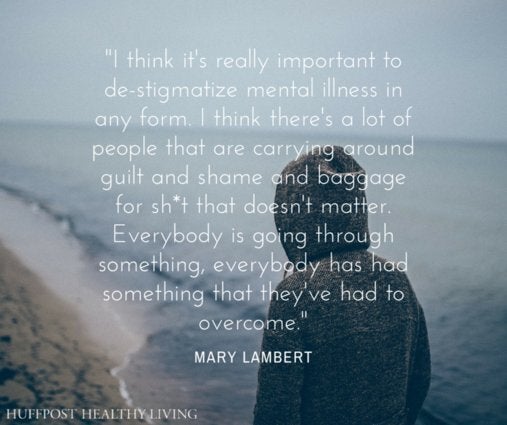
Written by Linda Conn, social worker, and Dr. Amy Cheung, youth psychiatrist, Bell Canada Chair in Adolescent Mood and Anxiety Disorders, Sunnybrook Health Sciences Centre.
As professionals in the area of youth mental health, we often hear:
"Isn't it normal for teens to have mood swings?"
Well-meaning parents, friends, and even youth themselves, can struggle to decipher the difference between a typical mood swing and a more severe mood disorder or form of mental illness. More often than not, people dismiss or ignore the signs of mental illness, thinking they are normal or a phase that will pass.
They may be using what they've seen in pop culture over the years, or what they themselves went through and perhaps normalize those experiences.
So what are fairly typical or "normal" mood swings in teens? Happy or sad moods that are not persistent; they don't last days to weeks on end. Typical mood swings are generally precipitated by environment, and don't involve drastic changes in behaviour such as changes in school performance, friendships, involvement in extracurricular activities, or irritability/temper outbursts.
With a mood disorder such as depression, signs and symptoms include:
- Persistent sadness with or without crying and not related to recent stressors such as a breakup.
- Irritability with everyone that the adolescent cannot control.
- Low energy/fatigue not due to lack of sleep and other medical causes are ruled out.
- Low motivation, change in interest observed that is not peer related.
- Sleep disturbance is a persistent problem and more than just a shifted cycle.
- Thoughts of death and cutting or burning are also common, as is ambivalence.
To help clarify the difference between typical mood swings and mood disorders, it's helpful to address some commonly held myths.
Myth: The majority of adolescents go through at least one significant period of depression.
False. However about one in 10 will have an episode of clinical depression while in high school.
Myth: Female adolescents are two to three times more likely than males to experience depression.
True. Girls are also two to three times more likely to have thoughts of suicide or to attempt suicide. However, boys are more likely to commit suicide.
Myth: Depression is a serious, debilitating health condition.
True. Depression is one of the leading causes of disability worldwide. 50 per cent of teens who commit suicide had depression.
Myth: Depression related problems with school functioning (poor attendance, poor work completion) can be effectively overcome by stricter discipline and appropriate consequences.
False. In fact, it may worsen the illness and slow recovery.
Myth: Depression will usually lift spontaneously in two to three months.
False. The illness is persistent and may take up to two years to lift spontaneously. Depression recurs in 60 per cent of teens. Teens who are not treated will suffer with the illness for an extended period of time.
Myth: Getting an adolescent to talk about their depression will tend to reinforce their state of mind.
False. In fact, talking is one of the most effective treatments for depression - in most cases, it is as effective as medications.
Myth: Asking a depressed adolescent about suicidal feelings should be avoided, as bringing up the subject can increase their risk for attempting suicide.
False. Similar to depression, talking about suicide is often helpful for teens.
Myth: There is good evidence that formal treatment helps depressed adolescents.
True. Both talk therapy or medications (or the combination of the two) have been found to be effective treatments for depression in teens.
Where to get help:
- School mental health workers
- Family doctor/pediatrician
- Local hospital
- Local children's mental health centres
- Support groups
- Private therapists (not OHIP covered)
- Employee assistance programs
What can parents do to help?
- Label what you see
- Educate yourself
- Treat depression like any other medical diagnosis
- Be an advocate for your teen
- Encourage teen to follow through with treatment
- Get supports for yourself
Resources
- Sunnybrook's Family Navigation Project
- Sunnybrook Department of Psychiatry Youth Division
- Fresh Start at Sunnybrook: an intensive school-based day treatment program
- Mood Disorders Association of Ontario
- E-Mental Health
Learn more about mental health information and resources from Sunnybrook experts at health.sunnybrook.ca
Follow HuffPost Canada Blogs on Facebook
ALSO ON HUFFPOST:
